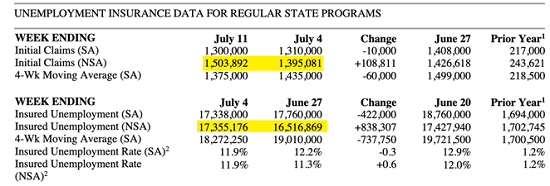Tax Hikes in a Pandemic: Some States, Cities Say Yes…
Nashville City Councilman Bob Mendes tried unsuccessfully for two years to get his booming city to raise property taxes to address its growing municipal needs.
Then came COVID-19. The City Council last month approved a 34% increase.
What changed?
“We’re broke,” said Mendes, who identifies as a Democrat though the council is nonpartisan.
Cities such as Nashville, Tennessee, and states from New York to California have raised taxes or are considering it amid a pandemic that has crushed the economy and thrown state and city budgets deep into the red.
Hundreds camp out in Oklahoma unemployment lines…
TULSA, Okla. – John Jolley never thought he’d be sleeping in his car awaiting unemployment benefits. But there he was, the owner of a once-successful advertising agency, taking a sweaty nap in a Subaru wagon in a convention center parking lot at 1:45 a.m. on a Wednesday.
The pandemic sent his business into a free fall, and now Jolley wanted to be first in line for an unemployment claims event beginning in five hours. He barely dozed, afraid that if he fell into a deep sleep, he would miss the early-morning handout of tickets for appointments with state agents.
There would be just 400 tickets handed out for that day’s event. When those ran out, there would be 400 more for appointments the following day.
“I just didn’t want to be number 803,” Jolley said.
In the four months since the pandemic began, nearly 50 million workers have filed unemployment claims nationwide, a flood that’s overwhelmed some states, freezing antiquated computer systems and jamming websites and phone lines for days. State benefit agencies in some parts of the country have evoked memories of Great Depression bread lines.
As businesses, agencies and organizations recalibrate to the reality that the V-shaped recovery was nothing but a brief fantasy, 6 million additional jobs lost may be a best-case scenario rather than the worst-case scenario.
It is somewhat less than reassuring that the “official” unemployment rate of around 12% is roughly half of the “real-world” unemployment rate. As always in the wonderful world of statistics, especially politically potent ones, it depends on what you measure, what you don’t measure / act as if it doesn’t exist, and how you measure what you do measure.
Everyone who digs beneath the headline numbers of employment / unemployment soon discovers a number of jarring anomalies in what the media presents as “factual statistics.”
The first is that the Bureau of Labor Statistics (BLS) doesn’t actually count the number of people who are employed / unemployed; they rely on a sampling survey of employers, which is more like an election poll than an actual measurement.
A Glimpse Into Fiscal Gloom Bearing Down on America
(Bloomberg) — In Cincinnati, a city of 300,000 on the banks of the Ohio River, Mayor John Cranley faces cuts to police, fire and sanitation without more help from Washington.The city has already had to tiptoe back from the fiscal abyss earlier this year by temporarily laying off one-quarter of its workforce and balancing its budget with debt. Seventy percent of Cincinnati’s revenue comes from taxes on wages, and with the coronavirus continuing to spread, leaving record joblessness in its wake, Cranley said he fears permanent declines in essential services.
“Frankly, we need a bridge for an economic recovery,” Cranley said in an interview. “What we’re talking about is stabilizing our existing services and figuring out how they don’t get diminished.”
The pandemic reduced tax collections across the country as safety precautions to limit the spread of the virus shuttered businesses and kept shoppers and tourists at home. A resurgence of the virus has forced states to reverse or slow reopenings. Cities face $360 billion in revenue losses through 2022, according to some forecasts.
Discussion over what to do about America’s depleted cities reaches a climax of sorts this week as congressional leaders say they’ll hammer out an aid package. In May, a $3.5 trillion round of stimulus that includes roughly $1 trillion for state and local governments passed the U.S. House, only to stall in the Republican-controlled Senate. Majority Leader Mitch McConnell has said the Senate will attempt to craft a bill of its own, while the White House has put a $1 trillion ceiling on additional federal aid. McConnell has been working closely with the administration on crafting a bill. Already this year, Congress has approved $150 billion in aid for state and local governments, but the money comes with a condition: It can’t be used to replace lost revenue.
Recovery of Collapsed Air Passenger Traffic in the US Backtracks
Confirming early warnings by United and Delta of re-declining ticket sales. V-Recovery has to wait in line. Airline shares down 3.7% intraday.
$600 Unemployment Boost. Stimulus Checks. Government Relief Is Coming to an Abrupt End
Most of the relief measures in the CARES Act are about to expire. Yet millions of Americans are still suffering financially amid the pandemic.
The Fed Is Going To Buy Stocks: Forbes
The Fed is going to buy stocks. I don’t know precisely when (sorry day traders), but it will happen, and probably soon.
